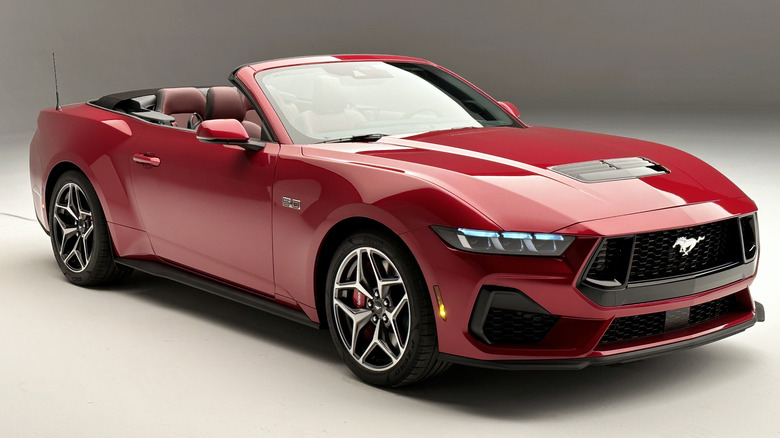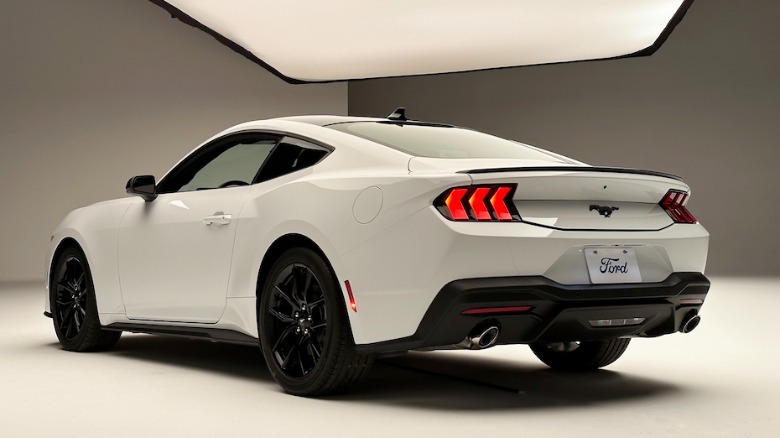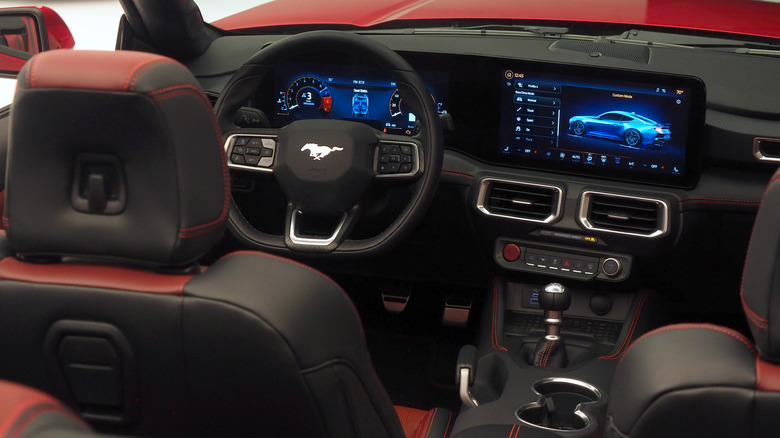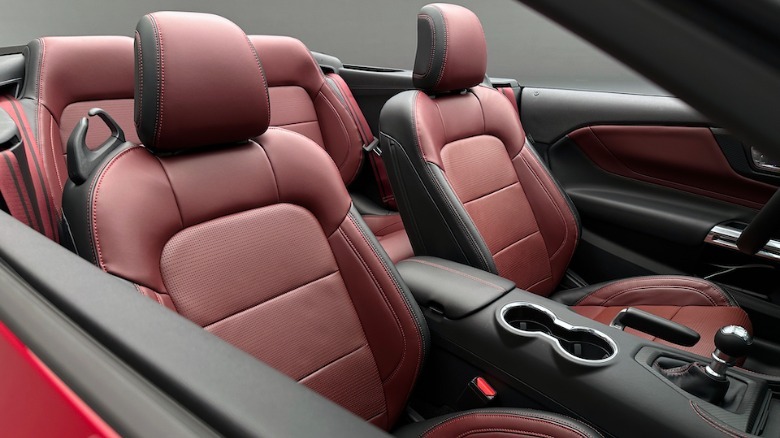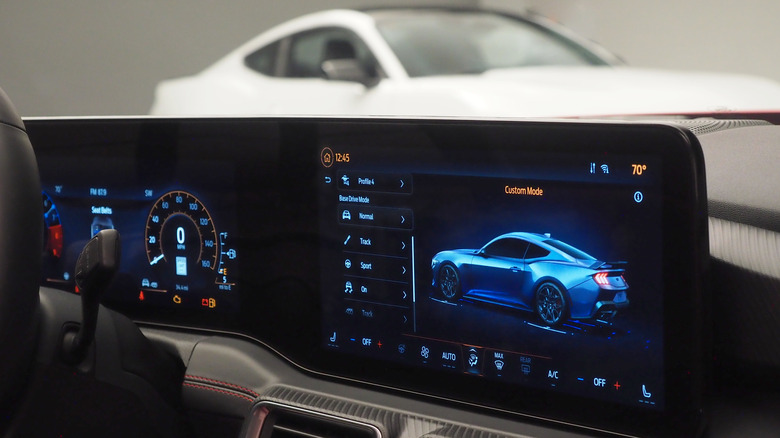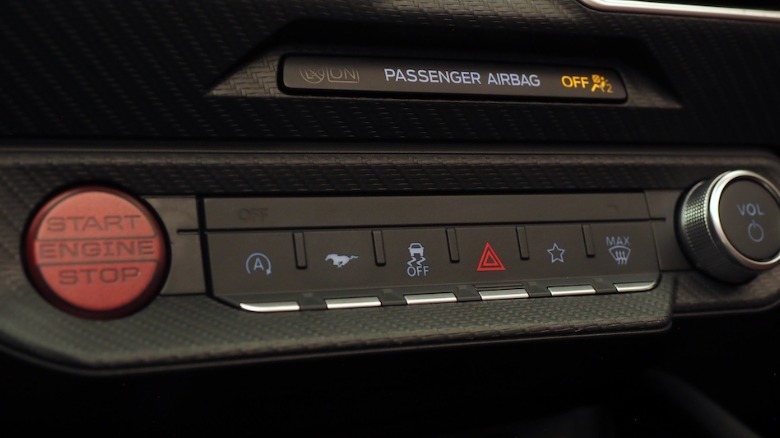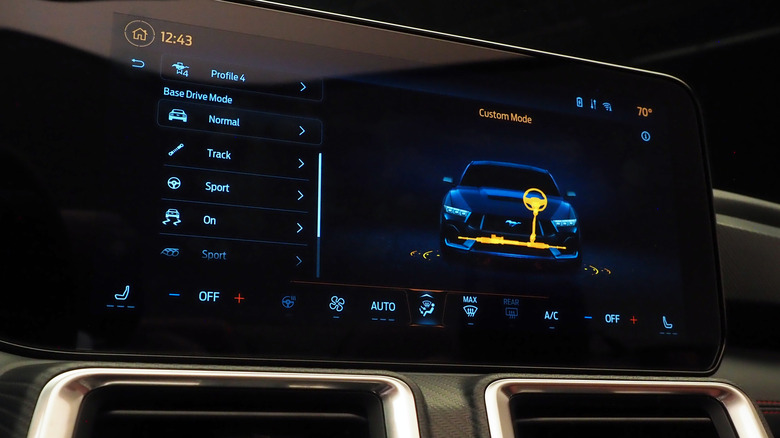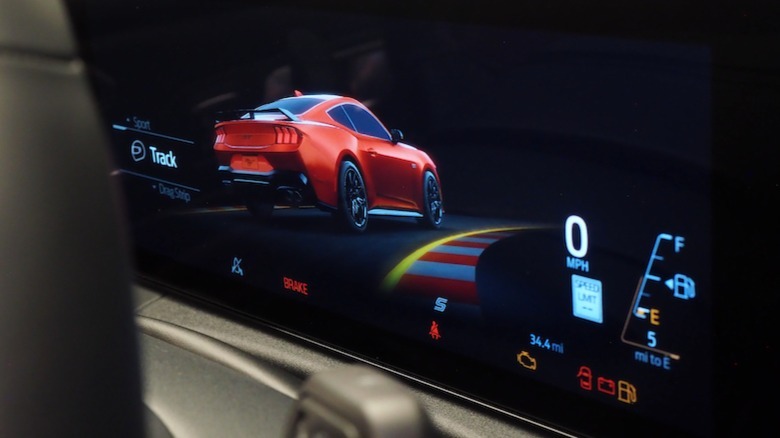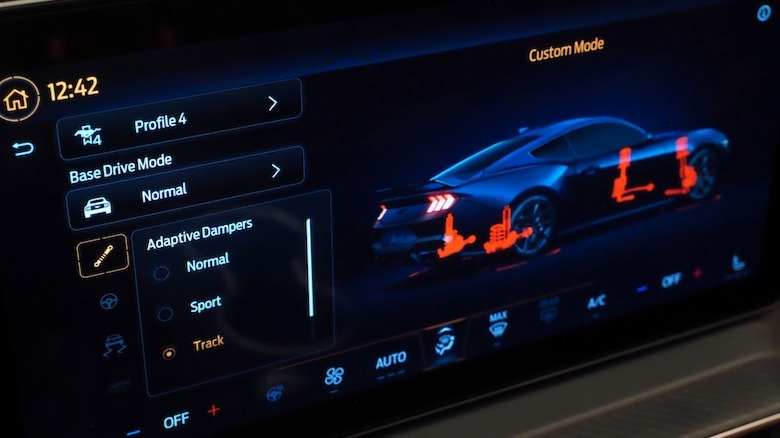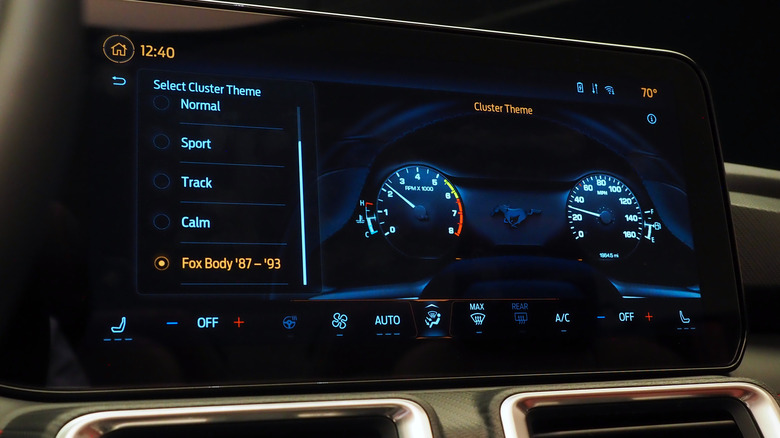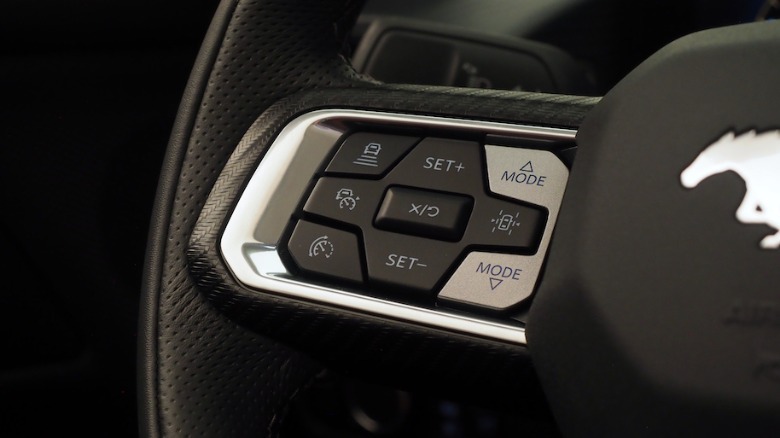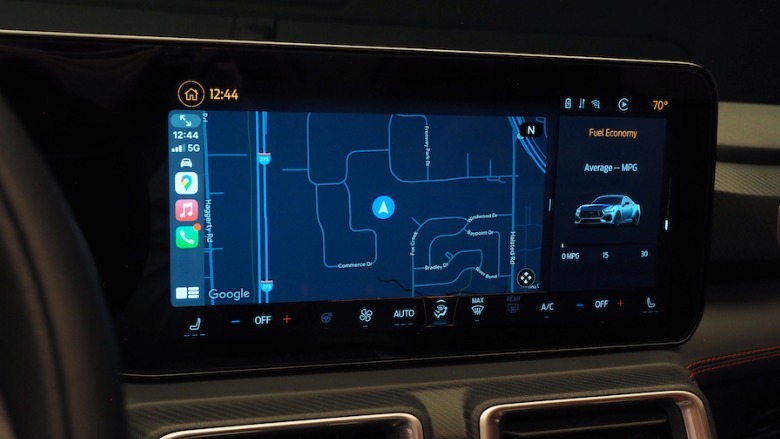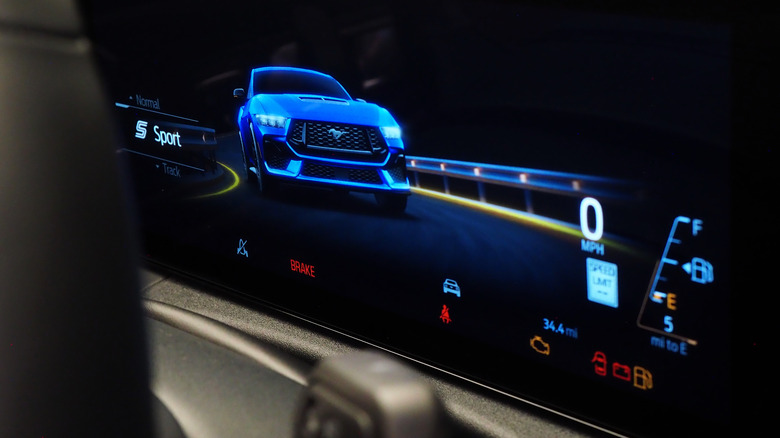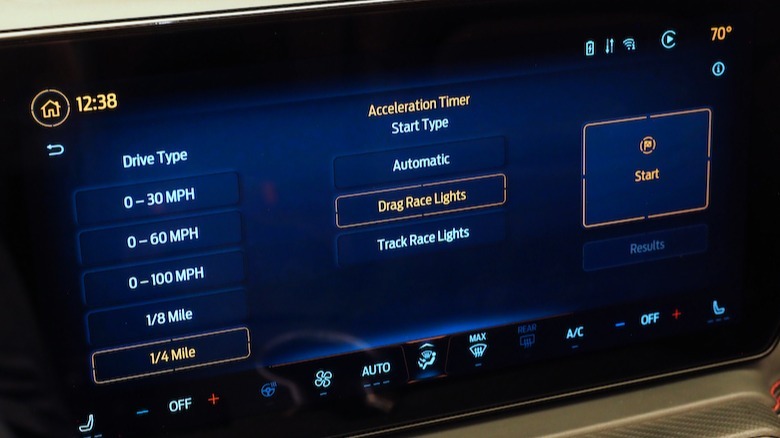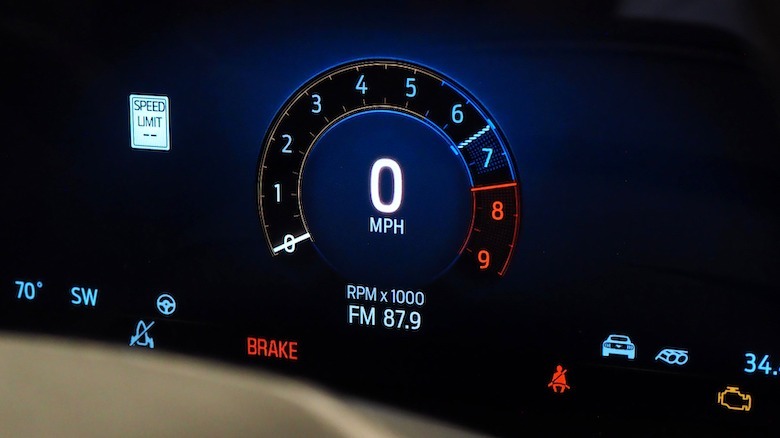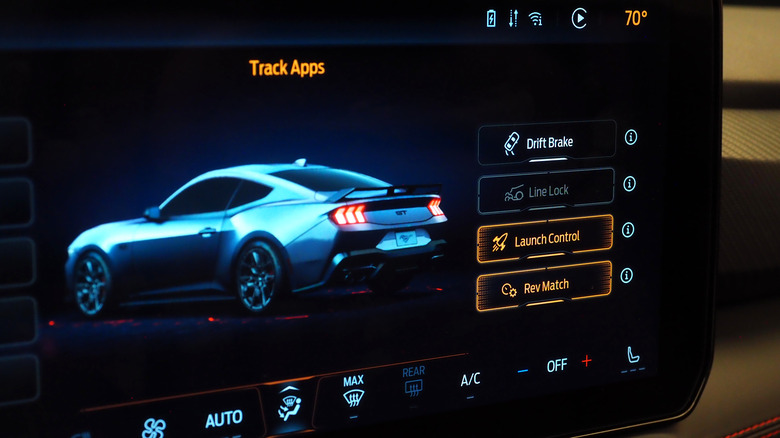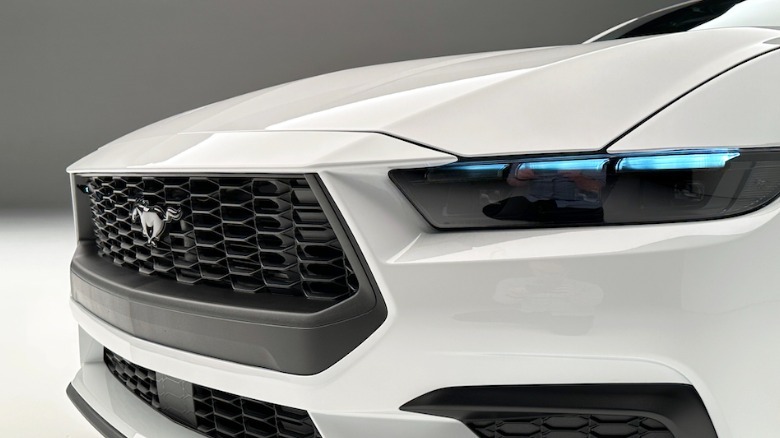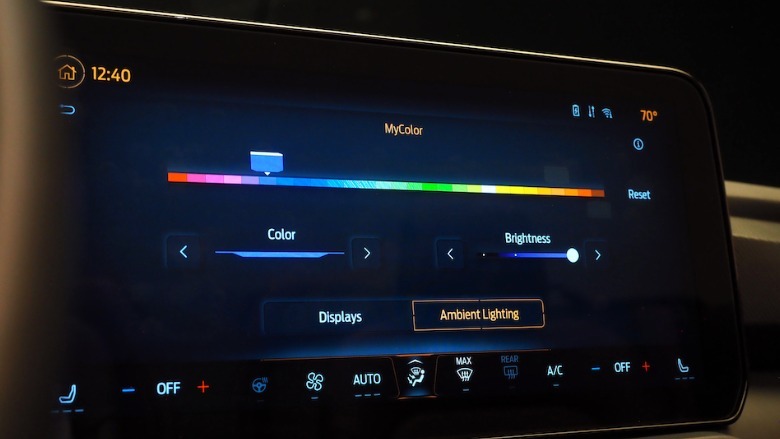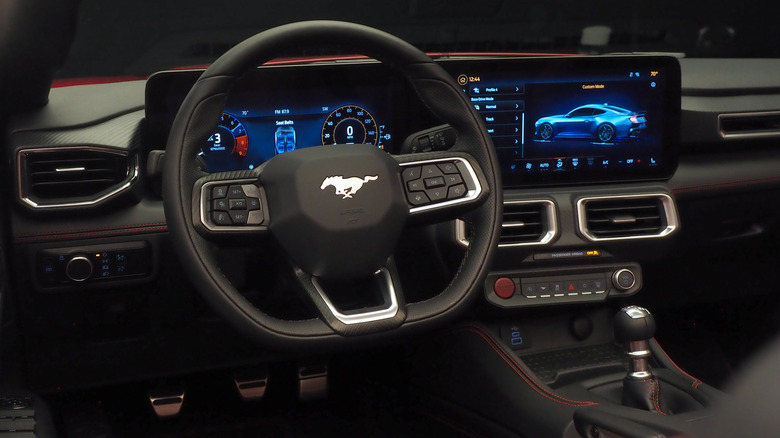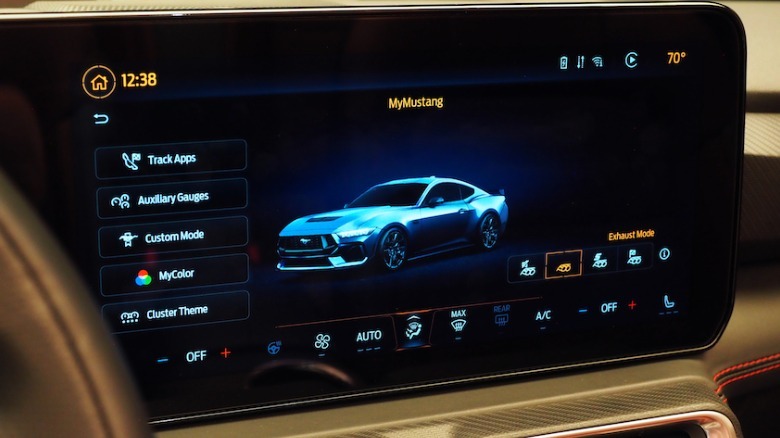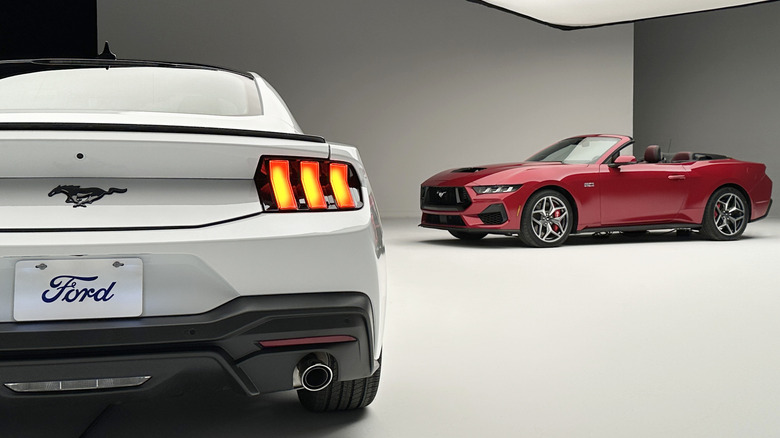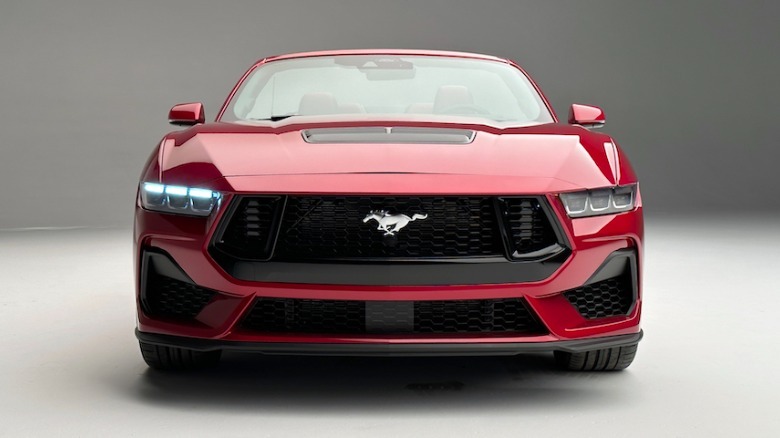Hands-On With The 2024 Mustang's Dashboard Convinced Us Ford's Unreal Gamble Pays Off
The stakes are high when you're trying to add technology to a bonafide automotive icon. Nobody would deny that the Ford Mustang is a legend in the auto world; similarly, few would argue with the suggestion that Mustang fans can be vocal in their disapproval of how Ford handles the nameplate. The outrage — still simmering more than three years later — over the Mustang Mach-E borrowing the pony car's brand for an all-electric crossover is evidence enough of that.
For the 2024 Mustang, then, the challenge is considerable. On the one hand, Mustang loyalists know what they like and aren't shy in reminding you. At the same time, the industry's focus on SUVs, trucks, and crossovers has already seen most of the Mustang's passenger car range-mates axed. If the seventh-generation Mustang coupe and convertible are to stay competitive and build a new audience of enthusiasts, Ford can't keep doing the same thing.
With iteration off the table, innovation has to weigh in. That's where a dashboard blessed with features more familiar from video games comes in, and in a preview SlashGear attended this week ahead of the new Mustang's arrival in Summer 2023, the charm proved more than just skin-deep.
No more half-measures
The current, sixth-generation Mustang has a digital driver display added in the model year 2018 refresh. The optional 12-inch instrument cluster ditches the analog dials in favor of virtual versions, but can also morph into different layouts depending on drive mode. Though it looks a little shoe-horned into the otherwise unchanged dashboard, the reception has been overwhelmingly positive, according to Ford's Craig Sandvig, Design Manager on the automaker's Digital Product Design team.
For the 2024 Mustang, the changes feel far more cohesive. The aging SYNC 3 has been ousted, and its relatively small center touchscreen; in its place, all versions of the seventh-generation car will get a pair of customizable displays. The driver will get a 12.4-inch cluster, while a 13.2-inch center touchscreen will run SYNC 4's multimedia, navigation, and settings interface.
In the base-spec Mustang, the two panels will be separate. However, more expensive trims will seal them inside a single piece of curved, canted glass, for a more seamless presentation. Instantly, it leaves the pony car feeling far more modern.
SYNC 4 makes all the difference
Part of the retrofit feel of the current Mustang's digital upgrade was how otherwise Ford's controls stayed much the same. That's not the case here, where the 2024 Mustang's designers have pared back physical buttons and switches, though sensibly not done away with them entirely.
SYNC 4 has a persistent row of HVAC controls along the bottom of the screen — they stay present even if you're using wireless Apple CarPlay or Android Auto — helping trim the physical buttons to a single row. There's still a volume knob, but otherwise, things are limited to engine start/stop, a "pony" button that summons the drive modes UI, traction control on/off, hazard blinkers, a programmable shortcut key, and finally window defrost.
On the steering wheel, there are dedicated drive mode buttons to switch through each mode, along with the usual cruise control and media keys. Switching drive modes conjures fully animated graphics in the driver's display, and that's where the new Mustang's special software sauce comes into play.
Unreal Engine brings game-style graphics
The current Mustang has animations, but they're just prerecorded loops. For the new car, Ford has used the Unreal Engine — more familiar from video games — to create a virtual version of the Mustang. It's that which you see hurtling around a race track when you switch to Track mode, for example, or facing the lights in Drag Strip mode.
In the center display, it's even more interactive. Each of the multiple driver profiles can have a Custom drive mode, with independent settings for things like engine mode, adaptive dampers, steering, and exhaust. Tweak them, and you see an accompanying representation on the virtual car, which can be dragged around on the screen like you might when choosing a vehicle from your "Forza Motorsport" garage.
Does it actively help you set up the new Mustang any better than in the old car? Maybe not: after all, Ford has offered customizable drive modes for some time, now, albeit in a more text-based format. However it certainly looks cool, and it's entirely possible that more drivers could end up adjusting their configuration simply because the interface is clearer.
Above all, easy to use
In fact, beyond the glitter of the 3D graphics, it's that ease of use which stands out. Prior Mustang models relied on the driver's display and the directional pad on the steering wheel for settings, which typically meant a lot of tapping through menus. Being able to simply reach out for the sizable center touchscreen and make those adjustments is far more straightforward.
Ambient lighting and UI color are similarly tweakable, with primary and accent colors a couple of markers dragged along a 28-hue color map. Being able to assign, say, quiet mode for the exhaust system to the programmable shortcut could make you popular with your neighbors, too.
Unlike in some rival cars, where Apple and Google's smartphone projection will take over your infotainment screen entirely, it's a little more granular in the 2024 Mustang. As well as the persistent HVAC bar, wireless CarPlay offers both a full-screen and a partial mode. The latter accommodates a sub-pane of Ford's own widgets, for things like navigation, media, and trip counter.
Mustang, but digital
The result manages to feel like a Mustang — Ford's liberal application of prancing ponies doesn't hurt there — while also feeling much more modern. The dual displays avoid the feeling that they're perched on top of the dashboard like a couple of iPads parachuted in, and they make features like lap, acceleration, and braking tracking much easier to access and review.
If you want all the metrics possible, you can have up to five virtual gauges in the center screen. Customizable, you can chose between things like engine temperature, G-forces, battery voltage, and other details. They're adjusted like you might move apps on a smartphone home screen: a long press on one pulls up buttons to cycle through the options.
Alternatively, at the other extreme, you can do away with most of the visual glitter. A quiet mode layout slims the driver's display to a tach and speedo, while the central touchscreen defaults to a clock and the HVAC buttons. Or, you can switch to the charming '87–'93 Fox-body Mustang UI. That might help keep old-school muscle car drivers happy.
Ford needs to win over younger drivers
Ford, though, isn't allowing Mustang traditionalists to sway things completely. The team behind the seventh-generation Mustang is upfront about the fact that the car needs to appeal to fresh blood if it's to stay successful. That means younger drivers, who have grown up with video games and smartphones, and who expect their cars to deliver a similar experience.
How, then, will the old-school cohort of Mustang fans react? Early feedback has been mixed, Ford reps concede, with some long-time enthusiasts vocal in their skepticism. Then again, it's unclear how much of that is a dislike of higher-technology dashboards, and how much is general apathy about change to pony cars in general.
The reality is that the high-tech, gaming-inspired stuff is all optional. With its dedicated drive mode buttons and other shortcuts, it's entirely possible to set things up on day one and then ignore them from that point on. Options like the ability to override the mode-specific UI switching and lock the instruments to a single layout should help the gadget-averse to overlook the 2024 Mustang's more whiz-bang features.
A proof of concept to sway Ford brass
Right now, though an advance on the current Mustang, the potential of the seventh-generation car is limited by the core architecture it's built on. At the moment, for example, the interactive graphics are all illustrative: SYNC 4 can show you the impact of your drive mode settings on dampers, steering, brakes, and such, but there's no feedback from those modules themselves to the digital version of the car. Similarly, though there's over-the-air (OTA) update support, just what can actually be tweaked with the software comes down to specific modules spread around the Mustang.
It's not hard to think about where an Unreal-powered system could progress, though, if Ford is of a mind to chase upgrades. Lap tracking that not only logs times, but shows all the loads and forces on a virtual car, for example, using actual data captured from sensors that could be spread around the Mustang.
For anything so aggressive, Ford's Sandvig says, bosses at the automaker will need to be convinced of its worth. That's why the reception to the new infotainment system in the 2024 Mustang is so important. If that proves positive, it'll be easier to convince those writing the checks that future vehicles should double down on what we've seen here.
Striking a balance between old and new
That won't just be the case for Mustang, either. Though its interface is different, this is the same SYNC 4 as runs on the Mustang Mach-E and the F-150 Lightning. It's mainly timing and the team's ambitions that saw elements like the Unreal-powered graphics debut on the 2024 Mustang first.
While an F-150 Lightning may not need a visual representation of how the electric pickup could perform in a drag race, being able to see how its various modes could impact towing, or off-road use, could make life a lot easier for truck newcomers. Bake in two-way feedback, like the Onboard Scales, and the virtual truck could potentially show things like how loads affect balance or range.
There's a fine line between gimmicks and the useful application of tech, especially when it comes to infotainment interfaces. It's also not an area where every automaker gets it right every time. If the 2024 Mustang's new dashboard is compelling, it's probably because of the balance Ford has struck between keeping long-time fans happy, while simultaneously making an appeal to newer, younger drivers. After all, without that latter group, the days of the affordable all-American muscle car could be numbered.
